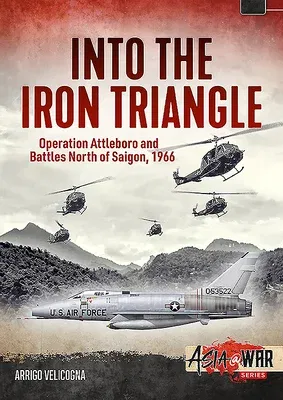In early October 1966, the fresh and inexperienced 196th Light Infantry
Brigade of the US Army was conducting a series of routine patrols in War
Zone C. A lucky discovery of a rice cache led to the uncovering of a
planned base area being established by the Viet Cong insurgents of South
Vietnam (NLF) southeast of Tay Ninh City. What followed was named
Operation Attleboro. Unbeknownst to the US and ARVN forces the NLF 9th
Division was preparing to attack the brigade in its base and two ARVN
positions near Tay Ninh. American moves spoiled the planned attack and
initiated a prolonged battle that at its height would pit four regiments
of the NLF and People's Army of Vietnam (PAVN) against 18 American and
three ARVN battalions, supported by 24 artillery batteries and countless
fixed wing and helicopter sorties, including 225 B-52 strikes. The
battle would also draw in the 1st Infantry Division, the famed 'Big Red
One' and the 25th Infantry Division. Both sides would claim victory but
the 9th Division limped towards Cambodia.
Attleboro was the largest American operation in the Vietnam War to date,
the culmination of one year of bloody battles between the 9th Division
and II Field Force Vietnam. It would be a test for the campaign that US
General William Westmoreland had planned for 1967. It would be also a
test of different tactical approaches to be used in Vietnam: an
'infantry-heavy' approach favored by the commander of the 196th, General
Edward H. De Saussure, and for firepower-intensive approach championed
by the Commanding General of the 1st Infantry Division, General William
DePuy.

